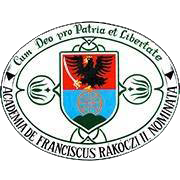Please use this identifier to cite or link to this item:
https://dspace.kmf.uz.ua/jspui/handle/123456789/4220| Title: | Методика досліджень у сфері мовного ландшафту (на основі міжнародного досвіду) |
| Other Titles: | Methodology of research in the field of linguistics landscape (on the basis of international experiences) |
| Authors: | Берегсасі Аніко Beregszászi Anikó Aniko Beregszaszi Газдаг Вільмош Gazdag Vilmos Черничко Степан Csernicskó István Csernicsko Istvan |
| Keywords: | мовний ландшафт;методи дослідження;квалітативний аналіз;мовна політика;мовні ідеології |
| Issue Date: | 2022 |
| Publisher: | ТОВ «фірма Планер» |
| Type: | dc.type.article |
| Citation: | In Наукові записки Вінницького державного педагогічного університету імені Михайла Коцюбинського. Серія: Філологія (мовознавство). Збірник наукових праць. 2022. Випуск 35. с. 99-112. |
| Series/Report no.: | Серія: Філологія (мовознавство);Випуск 35. |
| Abstract: | Резюме. Упродовж останнього десятиліття кількість досліджень, присвячених питанням
мовного ландшафту, значно зросла. Вивчення мовного ландшафту певного регіону стало
пріоритетною темою серед лінгвістів, особливо в поліетнічних та багатомовних регіонах.
У статті не лише з’ясовано сутність поняття «лінгвістичний ландшафт», а й
з’ясовано, що його можна інтерпретувати та досліджувати по-різному. Встановлено, що
частиною дедалі частіше інтерпретованого мовного ландшафту може бути також аналіз
мов, які використовуються в документах і навіть у грошових одиницях.
Окреслено, що онлайн-бібліографія «Лінгвокраєзнавча бібліографія» вже налічує понад
1150 записів, серед яких є також публікації про мовний ландшафт України. У міжнародній
літературі така тематика також поступово розширюється, тому власне поняття
постійно набуває нових інтерпретацій. Сьогодні вже вважаються його частиною написи
різними мовами на візитних картках, вивіски у публічних місцях, а також, наприклад,
маркування товарів, мова документів, офіційних бланків, грошових знаків.
У статті доведено, що мовний ландшафт є однією зі складових мовної політики, він
робить мовну політику відразу помітною. Те, як і які мови представлені в ЛЛ, свідчить про цілі мовної політики цієї держави та надає суспільству інформацію про мовні установки та
ідеології державної влади.
Як основний у статті застосовано історичний підхід до аналізу мовного ландшафту,
що допомагає з'ясувати аспекти мовної політики та мовної ідеології не лише сусідніх у
просторі держав, а й послідовних країн у часі. Водночас, замість кількісного методу, на
якому здавна робився акцент у дослідженнях мовного ландшафту, останнім часом надають
перевагу якісному аналізу, тому в статті робимо спробу зосередитися на розкритті
семіотичних характеристик мовного ландшафту. Abstract. Over the past decade, research on the topic of the linguistic landscape has grown considerably. The study of the linguistic landscape of a particular region has become a priority topic among linguists in recent years, especially in multi-ethnic and multilingual regions. For example, the online Linguistic Landscape Bibliography already has more than 1150 entries, including publications on the linguistic landscape of Ukraine. In the international literature, the topic of research on the linguistic landscape is also gradually expanding, so the concept itself is constantly acquiring new interpretations. Today inscriptions in different languages on business cards are already considered part of it, as well as, for example, the marking of goods, the language of documents, official forms, as well as, for example, banknotes. We show, that the linguistic landscape is one of the components of language policy; it makes the language policy immediately apparent. How and what languages are represented in the LL indicates the given state’s language policy objectives and provides the society with information on the linguistic attitudes and ideologies of the state power. The linguistic landscape has recently become an object of scientific study, so the methodology of its research is still being formed. The aim of this article is to introduce the concept of linguistic landscape and to present ways of research based on the international scientific literature. Applying the abovementioned approaches, in this publication we have shown that the concept of "linguistic landscape" is not only an analysis of signage in public places, it can be interpreted and investigated in different ways. We believe that part of the increasingly interpreted linguistic landscape can also be an analysis of the languages used in documents and even in monetary units. Agreeing with many researchers on this topic, we note that a historical approach to the analysis of the linguistic landscape helps to clarify aspects of language policy and language ideology not only of neighboring states in space, but also of successive countries over time. At the same time, instead of the quantitative method, which has long been emphasized in studies of the linguistic landscape, qualitative analysis has recently been favored, so we also recommend focusing on the disclosure of semiotic characteristics of the linguistic landscape. |
| URI: | https://dspace.kmf.uz.ua/jspui/handle/123456789/4220 |
| ISSN: | 2521-1293 (Print) |
| metadata.dc.rights.uri: | http://creativecommons.org/licenses/by-nc-nd/3.0/us/ |
| Appears in Collections: | Beregszászi Anikó Csernicskó István Gazdag Vilmos |
Files in This Item:
| File | Description | Size | Format | |
|---|---|---|---|---|
| Berehsasi_A_Hazdah_ChernychkO_Metodyka_doslidzhen_sferi_movnoho_landshaftu_2022.pdf | In Наукові записки Вінницького державного педагогічного університету імені Михайла Коцюбинського. Серія: Філологія (мовознавство). Збірник наукових праць. 2022. Випуск 35. с. 99-112. | 417.62 kB | Adobe PDF | View/Open |
This item is licensed under a Creative Commons License





